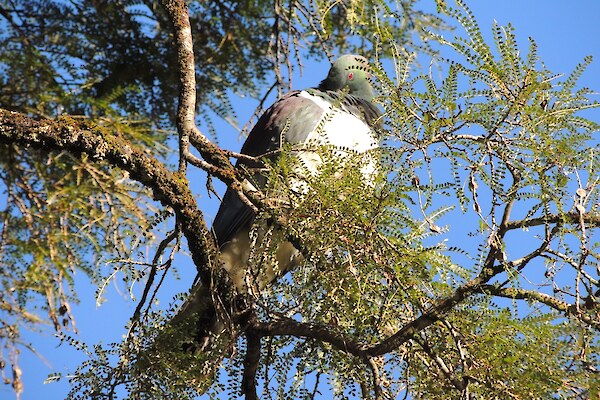The Waikawa Catchment has a variety of forest ecosystems, some of which are narurally rare and now more uncommon due to human inducced loss:
Thin-barked tōtara forest
- Rare ecosystem which forms on stable dunes with free-draining recent sandy soils
Supports pakake / NZ sealion (Threatened – Nationally Vulnerable), and hoiho / yellow-eyed penguin (Threatened – Nationally Endangered).
A great place to see this forest is the eastern side of Waikawa Harbour at the end of Yorke Road. Please take care when visiting and learn about how to avoid harming or disturbing sealions or penguins
There are apportunities to expand or reinstate this ecosystem around the Waikawa Harbour and nearby coastline.
Podocarp kōwhai-ribbonwood forest
- Originally rare in the area - 2% in pre-human times in the Tahakopa Ecological district, now 5% of this remains.
Supports at risk plant species such as fragrant tree daisy (Olearia fragrantissima) and Coprosma virescens which both have the Conservation Status ‘At Risk - Declining’.
Large podocarps like mataī and thin-barked tōtara have been logged historically but some large examples remain, for example at the forest below Manga Piri / Niagara Falls.
There are many opportunities to reconnect fragmented patches of this forest type all along the Waikawa River.
Kāmahi southern rātā podocarp forest
Much of the upper parts of the Waikawa Catchment are still covered in this temperate rainforest - the dominant canopy trees is kāmahi with ancient podocarps such as rimu and miro emerging above the canopy and southern rātā growing on bluffs and ridges.
Some years southern rātā flower particularly heavily and the hills glow red in mid-summer - the tree is known as the ‘southern New Zealand Christmas tree’ (it is closely related to pōhutukawa).
Southern rātā is vulnerable to introduced possums, whose intense feeding can cause ancient trees to die, and it is also impacted by an introduced fungus called Myrtle rust.
This forest type is hard to restore because the dominant species prefer to grow amongst the shelter of other trees - planting tough ‘first responder’ species which are eventually replaced by forest giants is effective but takes patience and commitment.
Modified lowland forest
- There are many examples of regenerating forest in the Waikawa Catchment, often on marginal land (e.g. steep and south-facing). These areas typically have had the large podocarps logged in the past (e.g. rimu and miro on the slopes and totara, matai or kahikatea on the valley floor).
- Natural regeneration will in time lead to more complex and diverse forest, but pests such as feral deer, goats, pigs and possums slow this process or halt it entirely.


